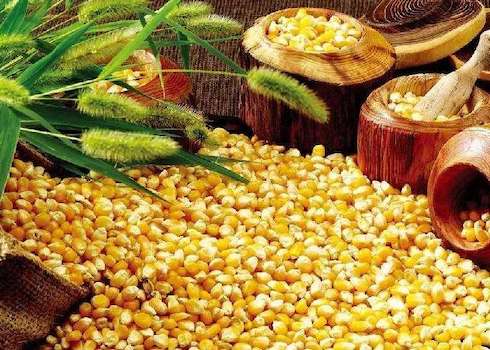Future Daily: Temperature will Rise in Northeast Corn Production Area And South American Soybean Yield will be Boosted
February 17 2020 09:18:28 SunSirs (Daisy)
Corn
Domestic: Around the end of last week, the cold wave affected most of the northern part of China. The temperature in the whole country dropped about 10 ℃, and the highest temperature in Northeast China fell back to the freezing point. On February 16, the temperature level in Liaoning and Jilin was - 15 ℃ - 6 ℃. From the perspective of meteorological development, the low temperature weather will last until around the 19th, and then the temperature in China will rise steadily. The highest temperature in most of Liaoning and Southern Jilin will rise to 5 ℃ - 8 ℃, the snow melting probability will increase, and the open-air storage pressure of "lying grain" corn is still large.
Such weather will help improve help the North of China (northeast and North China) However, considering the incomplete recovery of the transport of COVID-19, the sales and marketing activities of farmers are still relatively tight, which will help to keep the corn market strong. It is expected that from late February to early March, the North China and parts of Northeast China will receive a large range of precipitation weather and continue to test the circulation level of new season corn.
International Market: Last week, Brazil's precipitation improved, boosting corn production in the central and western regions. This week, Brazil's precipitation will mainly focus on the central and western regions and the matopiba planting belt. It is expected that the weekly precipitation will be 60-120mm, which will help corn grow better in the growing period. The precipitation of Parana, Santa cata and Rio Grande in the south of Brazil is expected to be 30-35mm, about 20% less than that in the whole year, and the drying period is longer, which is good for corn harvesting in the south.
Since February, the temperature level in Brazil is lower than that in the whole year, and the precipitation distribution difference between regions is large, which leads to drought in the central and western regions and the southern regions of Brazil, which affects the formation of corn production.
However, the corn production is expected to reach 100 million tons, slightly higher than that in the previous year, boosted by the planting area (500,000 hectares more than that in the previous year). According to the investigation of local organizations, the corn harvesting progress in southern Brazil is relatively fast at present, with 43% in Rio Grande. The loss of corn comes from two aspects, that is the decline of unit yield caused by weather and the deterioration of quality.
Meanwhile, it is expected that the precipitation in central and western Brazil will remain high from this week to the beginning of March, which is unfavorable to the quality of corn in mature harvest period. This week, the precipitation in northern Argentina may continue to be abundant. It is estimated that the precipitation in Santa Fe, Chaco, Santiago and corinthias will reach 40-70mm, about 20% more than that in the whole year. Some corn belts may be too wet, and rainy weather will affect the growth of corn. Central areas such as Buenos Aires will be relatively dry this week, and the overall temperature in Argentina is slightly higher than that of the year. In the coming week, precipitation in the planting belt of central and northern Argentina is expected to weaken, but the short-term impact on corn is limited.
Soybean
International Market: The improvement of precipitation conditions has boosted soybean production expectations in Brazil to a certain extent. In the past, due to the uneven distribution of precipitation, parts of southern and central western Brazil showed obvious dryness, and soybean yield was suppressed.
However, since February, the precipitation in some soybean belts has improved, and the precipitation in the Midwest and matopiba soybean belts is abundant, which promotes soybean production. This week's precipitation will still be concentrated in the central, Southeast and matopiba areas of Brazil. The precipitation is expected to be 60-120mm, and the relatively abundant precipitation is expected to continue into the next week. The average precipitation is about 2 inches more than the normal, and the temperature level will remain normal as a whole, which will be conducive to the improvement of Brazil's soybean yield.
At present, soybean production in Brazil is generally in good condition, and some producers are still looking forward to more precipitation to promote better soybean production results.
Last week, there was a large range of precipitation in the north central part of Argentina, which effectively improved the moisture content of Cordoba, Turkmenistan and other provinces. Although excessive precipitation occurred in some areas, it was generally good for soybean production. This week's precipitation in northern Argentina is expected to remain heavy, with precipitation in corantes, Chaco, Santa Fe and other production areas reaching 60mm, which is weaker than last week's precipitation.
According to the weather forecast, in the next week or two, precipitation in northern Argentina will weaken, and some soybean belts will enter the dry weather mode. It is worth noting that the precipitation in central areas such as Buenos Aires is less for a period of time. In the future, it may be negatively affected by the further aggravation of dry weather on the growth of soybean.
If you have any questions, please feel free to contact SunSirs with support@sunsirs.com.
- 2024-04-24 SunSirs: Relatively Tight Supply, China Domestic Soybean Market slightly Rebounds
- 2024-04-24 SunSirs: China Corn Prices Continued to be Weak Last Week (April 15-19)
- 2024-04-19 SunSirs: Low Terminal Demand, China Domestic Soybean Market is Stable
- 2024-04-16 SunSirs: China Corn Prices Fluctuated weakly Last Week (April 8-12)
- 2024-04-08 SunSirs: Weak Demand, China Domestic Soybean Market is Stable



